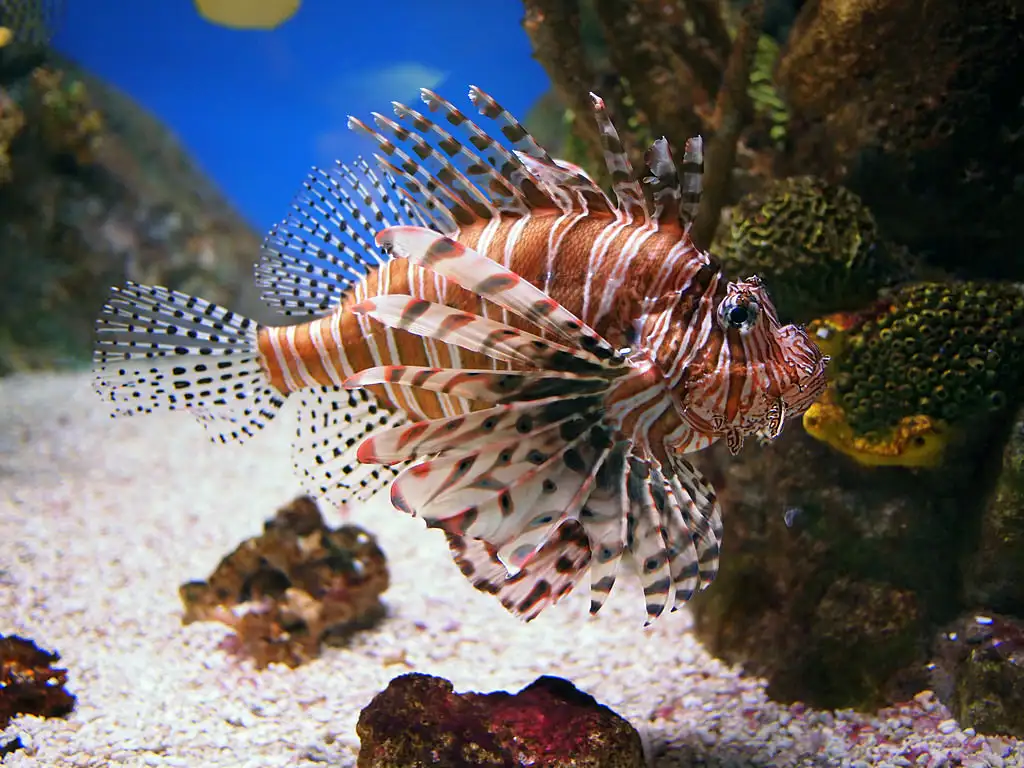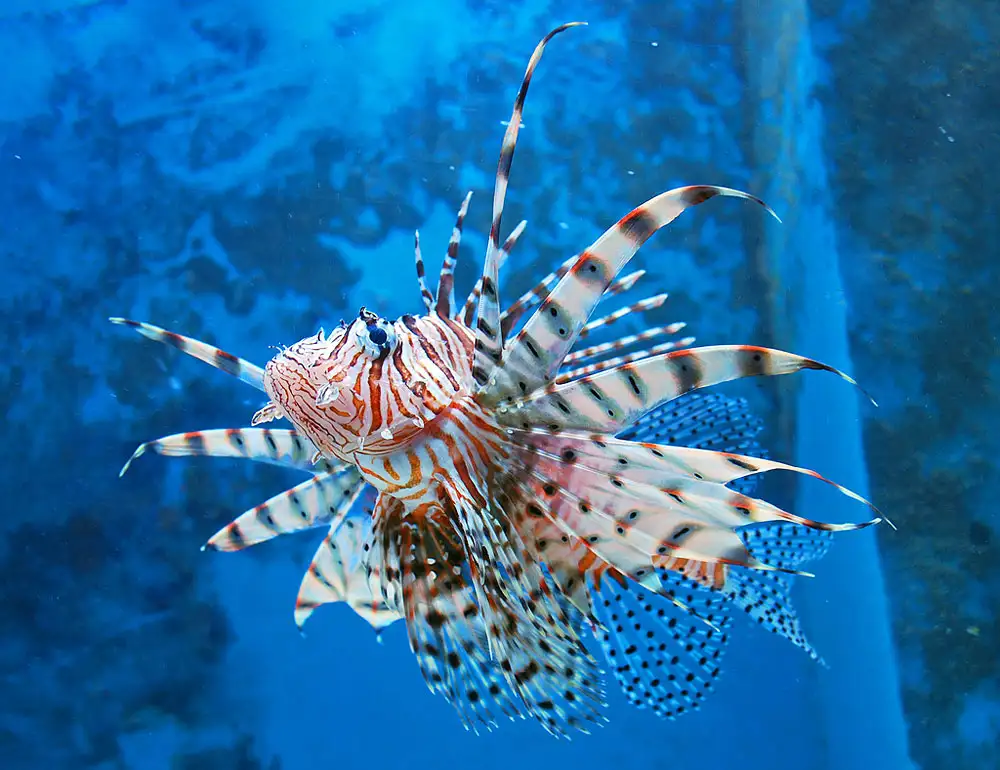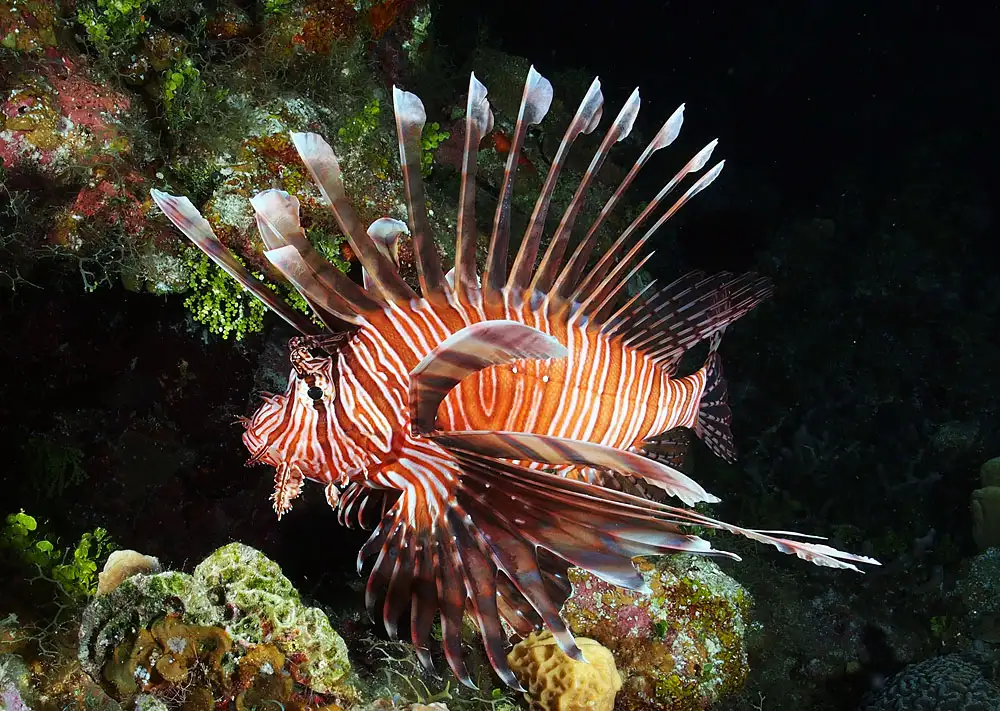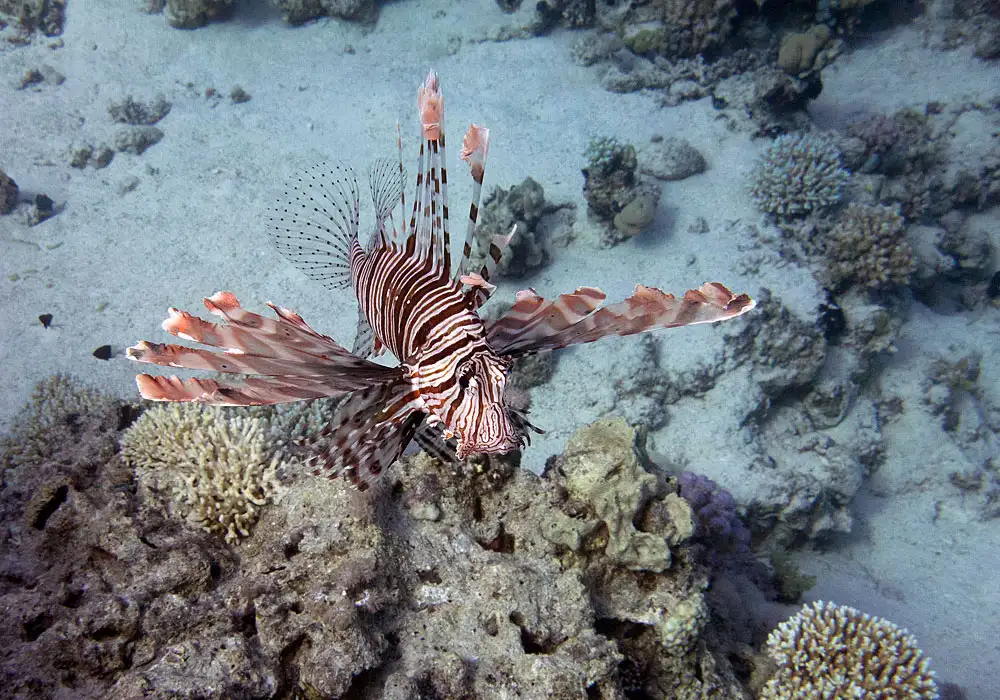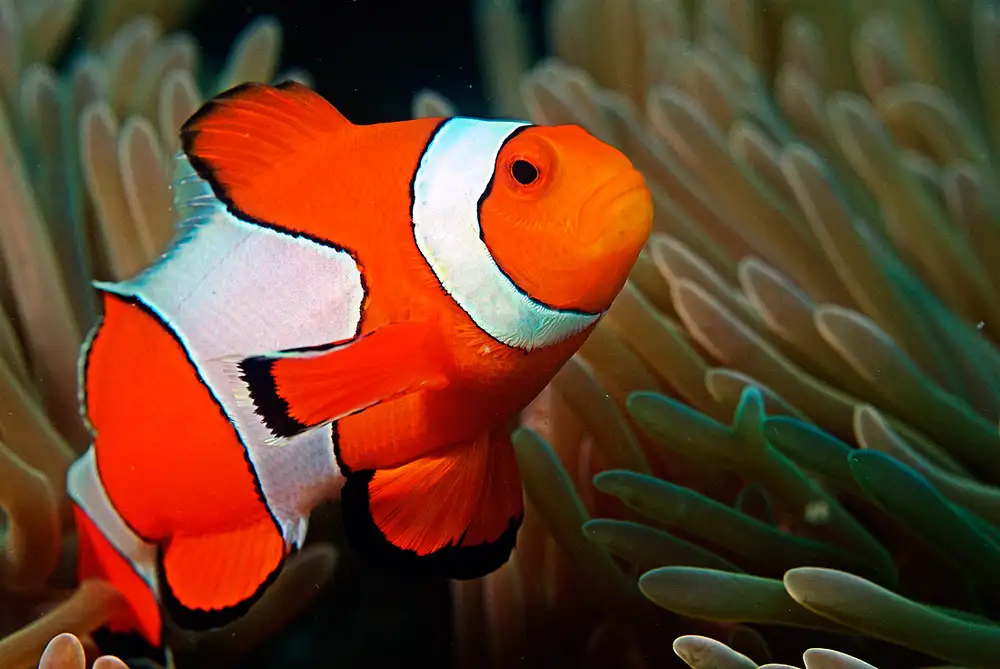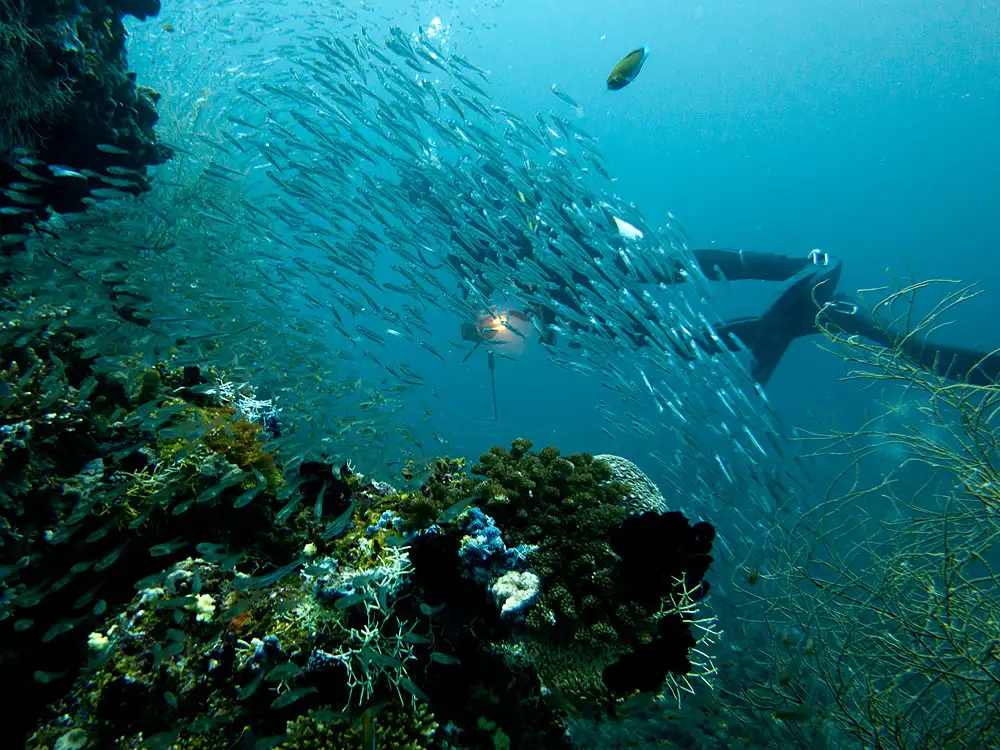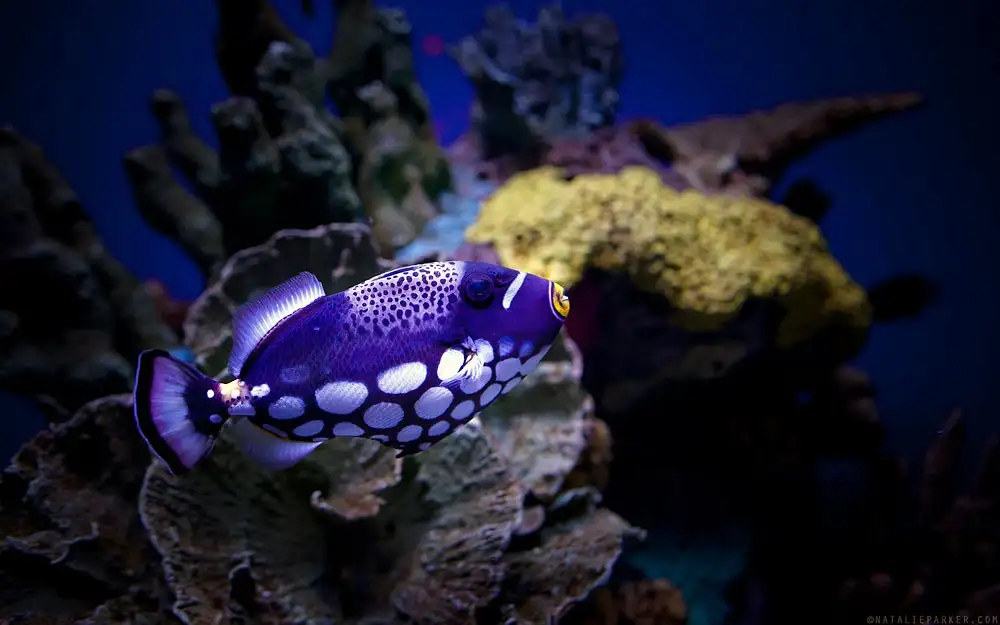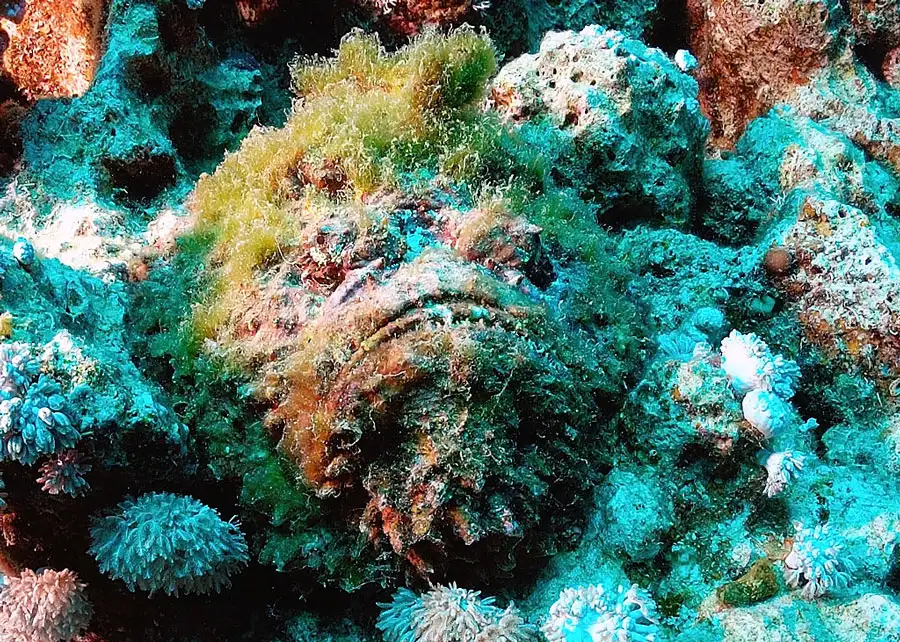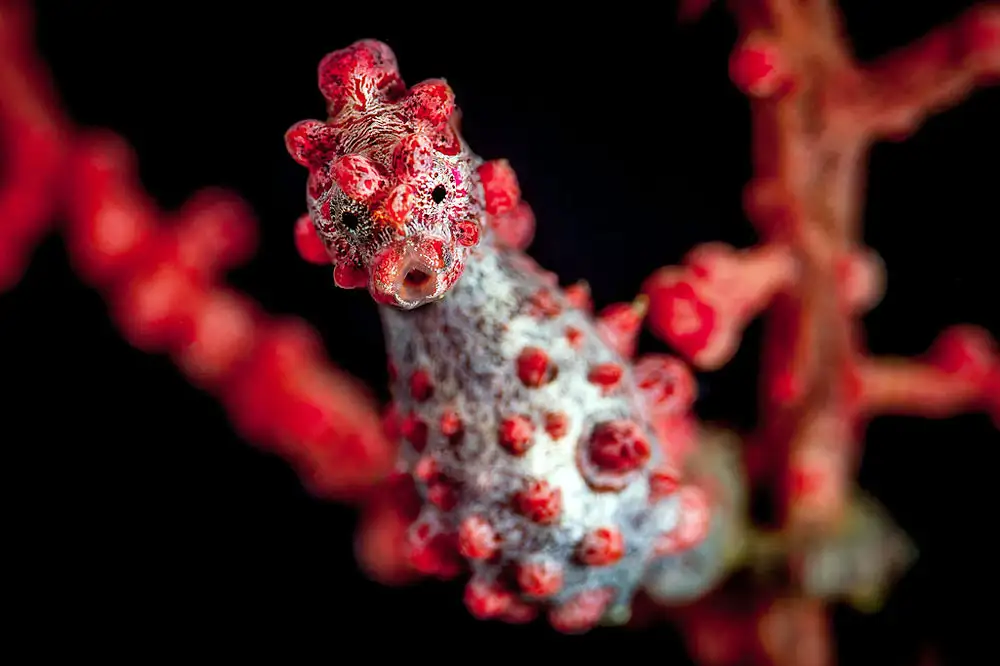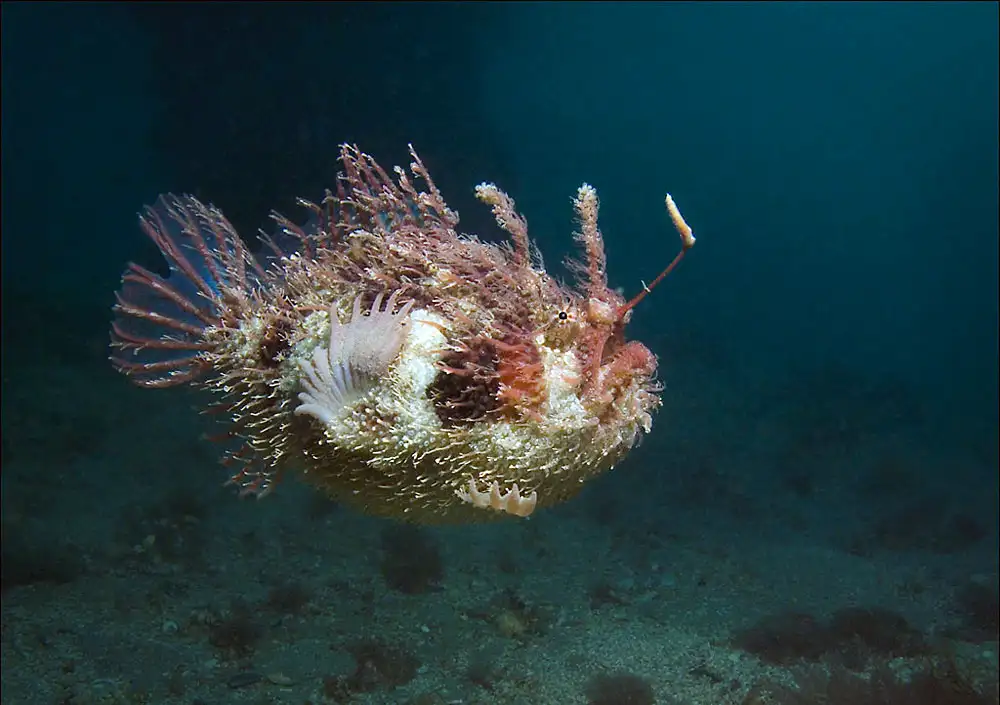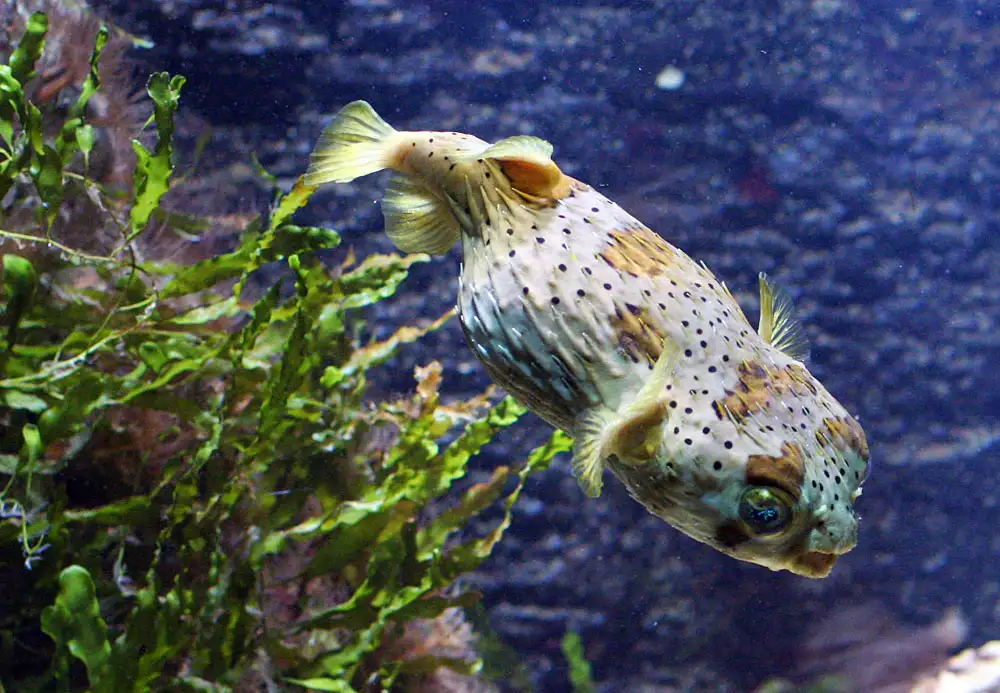Pterois volitans (Red Lionfish)
IUCN
LCBasic Information
Scientific classification
- name:Pterois volitans (Red Lionfish)
- Scientific Name:Pterois volitans
- Outline:Small fish
- Family:Scorpaenidae Pterois
Vital signs
- length:Commonly 20–35 cm; max ~45+ cm
- Weight:Hundreds of grams to ~1 kg in large adults
- lifetime:Approx. 5–10 years
Feature
Venomous spines; fan‑like pectorals; herding + suction feeding; invasive in W Atlantic–Caribbean.
Distribution and Habitat
Native Indo‑West Pacific; invasive W Atlantic–Caribbean–Gulf; reefs/structures/seagrass edges, 1–100+ m.
Appearance
Reddish‑brown/orange with narrow white bars; long fan‑like pectorals; 13 dorsal spines.
Details
Pterois volitans—the red lionfish—is a scorpionfish (family Scorpaenidae) native to theIndo‑West Pacific. It is famous for its fan‑like pectorals and venomous dorsal/anal/pelvic spines. In the western Atlantic–Caribbean–Gulf of Mexico it is a well‑documented invasive species that depresses local small‑reef‑fish populations.
Ecology & Biology
Diet: small fishes and crustaceans; hunts at dusk/night, herding prey with pectorals and striking via suction feeding.
Reproduction: males and females release gelatinous egg masses into the water column; high fecundity aids rapid spread.
Venom: hollow spines on dorsal/anal/pelvic fins deliver venom defensively when compressed.
Identification
Colour/pattern: reddish‑brown to orange with narrow white bars; very elongate fan‑like pectorals.
Spines: typically 13 dorsal spines plus spines on pelvic and anal fins—handle with care.
Juveniles: longer, filamentous pectoral rays; often hover near reef edges and structures.
Size & Longevity
Length: commonly 20–35 cm, up to ~45+ cm.
Life: roughly 5–10 years (region‑dependent).
Range & Habitat
Native: Indo‑West Pacific (Indonesia, Philippines, PNG, N Australia, etc.).Invasive: western Atlantic/Caribbean/Gulf of Mexico. Occurs on reef slopes, artificial reefs, seagrass edges, piers and wrecks from 1–100+ m.
Conservation & People
IUCN: Least Concern (LC) in its native range.
Invasion impacts: reduces native small‑fish abundance/recruitment; targeted removals and edible marketing are used for control.
Safety: avoid bare‑hand handling; if envenomated, local guidance often recommends hot‑water immersion for pain relief and seeking prompt medical care.
FAQ
Q1. Difference from Pterois miles? P. miles (Indian Ocean) tends to have coarser banding; both form the invasive “lionfish complex” in the Atlantic.
Q2. Are they dangerous? Not aggressive; injuries result from accidental contact or improper handling.
Q3. Why are they successful invaders? High fecundity, generalist diet, few predators and tolerance of varied habitats/depths.
Q4. Edible? Yes, with careful spine removal and adherence to local regulations/food‑safety guidance.

